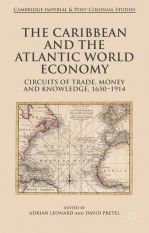By David Pretel and Nadia Fernandez de Pinedo

European and American industrial nations and the slave plantations of the Spanish Caribbean were not opposing economic systems during the nineteenth century; rather they were deeply entwined: the ‘sugar industrial revolution’ occurring on Cuban plantations coincided with the industrialisation of the Atlantic World economy. During the central decades of the century, Cuba experienced a period in which agrarian capitalism expanded, and Creole planters managed to transform their small-scale slave plantations into large agro-industrial complexes. Cuba emerged as an advanced agro-industrial region where planters, sugar masters, and prominent businessmen embraced the latest technical innovations and participated in transnational networks of commercial and knowledge exchange. It became the largest sugar producer in the Atlantic World.
Published:
2015
Online available:
link.springer.com